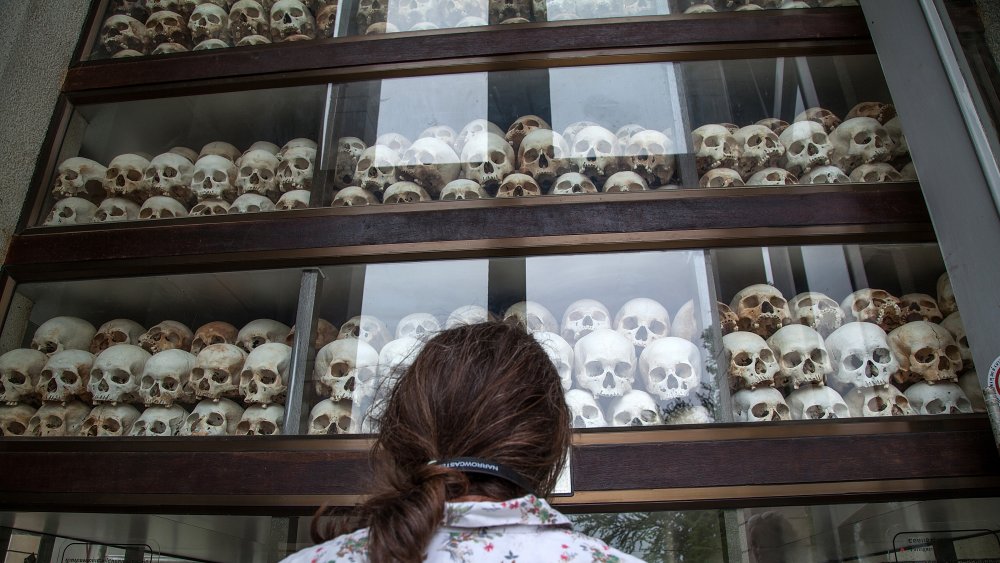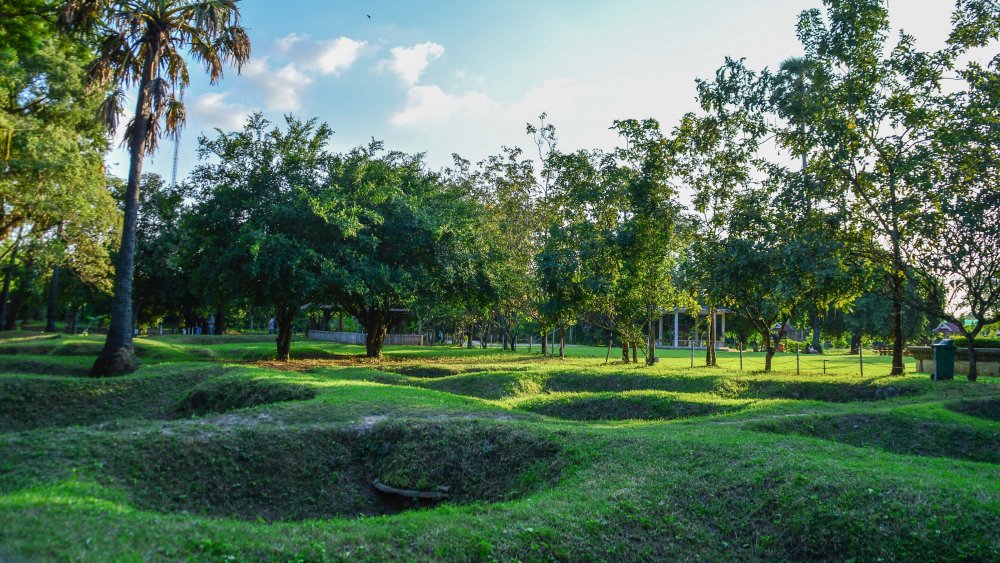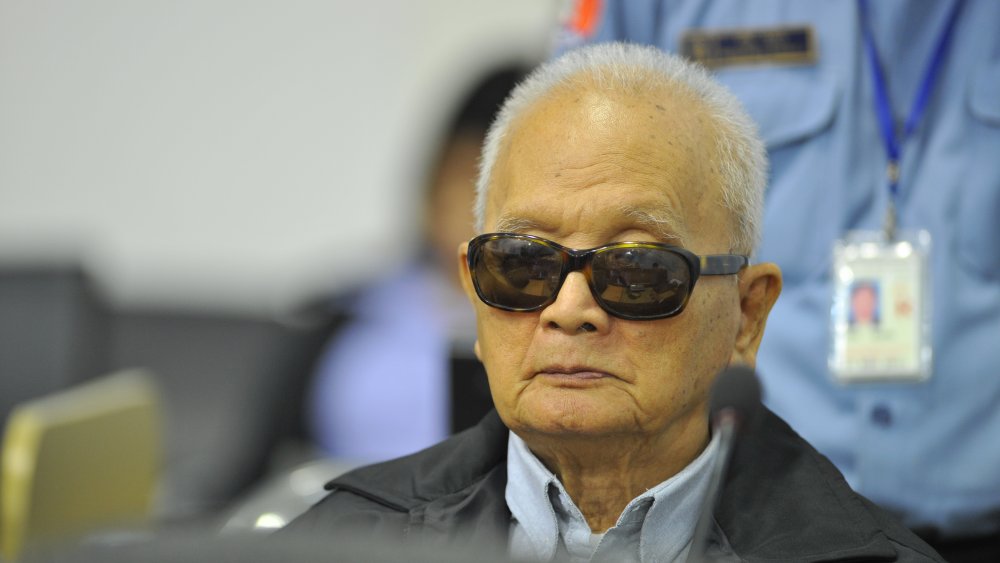The Tragic Real-Life Story Of The Killing Fields
"Hell on Earth." That's how the Chicago-based Cambodian sculptor Narath Tan described his home region, Pursat, to Bruce Sharp. Tan points Sharp's attention to a carving: "The carving has split apart as the clay has dried; in the center, the body of a beautiful apsara — a dancer — is cracked and broken," Sharp writes. "The cracks are deliberate. 'This,' Tan explains, 'is like my country, from 1975 to 1978,'" the years of the Cambodian genocide, in which over a million people were killed and buried by the Khmer Rouge in over 20,000 mass graves.
The Khmer Rouge, Cambodia's communist party, came to power during the United States bombing campaign in April 1975. By May 1975, The Guardian had started to report that the new Cambodian government was moving millions of citizens from Phnom Penh, the capital, to work in rural collectives. By August, their editorial writers were noting that the Khmer Rouge were engaged in an "ultra-dogmatic attempt to make all society rural." By February 1976, reports were emerging from Cambodia that the government had resorted to using executions as a form of control: "Every disappearance, from village, factory or town, is assumed to have ended in death in some forest clearing or at some river edge."
The photojournalist Dith Pran toiled in this environment, and then escaped from it during the end days of the Khmer Rouge. He described the clusters of bodies he passed during his escape as "killing fields," the phrase that now stands for the mass graves.
Fields of blood
Many died from starvation. Pin Yathay, another escapee, told the Lakeland Ledger in 1978 that rations were diminished to one tin of rice for eight people. Anyone who tried to act against the angkar, the Khmer word for "the organization," disappeared: "If a mother was caught stealing food, the whole family was taken away. Cats and dogs disappeared. People began to eat the flesh off dead bodies."
More died from execution. Susan Cook, the director of the Cambodian Genocide Program at Yale University, told CBS that the driving motivation for the Khmer Rouge was not ethnic cleansing, but ideological: "[the Khmer Rouge] thought they could reorganize a society to bring it backwards in time to a state of agrarian purity."
To do this, they had to eliminate all connections with the outside world and all traces of the old regime. If you knew a foreign language, you were a target. If you worked with a foreigner, you were a target. If you expressed love to your spouse, you were a target. Simply shooting dissenters wouldn't work, however, because bullets were precious in an agrarian society. Instead, as National Geographic heard from guides for the Killing Fields, axes, knives, and bamboo sticks were more common; with children, "their murderers simply battered them against trees." Yale's Cambodian Genocide Program estimates that 1.7 million people, or 21% of the country's entire population, lost their lives. For living Cambodians, the greatest shame is that Cambodians exterminated Cambodians in an auto-genocide.
Trial
On November 16, 2018, the Extraordinary Chambers in the Courts of Cambodia issued a press release: "Today, the Trial Chamber of the Extraordinary Chambers in the Courts of Cambodia (ECCC) convicted former senior Khmer Rouge leaders NUON Chea and KHIEU Samphan of genocide, crimes against humanity and grave breaches of the Geneva Conventions of 1949."
Forty years have passed since the end of the Cambodian genocide, an atrocity only stopped because the Vietnamese invaded and ousted the Khmer Rouge. Pol Pot, the Khmer Rouge dictator, died of heart failure in 1998 while imprisoned by other members of the Khmer Rouge. The other two high-ranking Khmer Rouge members who were convicted were arrested in 2007 as Cambodia performed its own Nuremberg-styled trial with the help of the UN, conducted against the opposition and then under the influence of the Prime Minister Hen Sen, who had at one point served in the Khmer Rouge himself. Critics have argued that what these trials do, then, is to present a history that suits the current government, not one true to the trauma suffered by the people. As Alexander Hinton, director of the Centre for the Study of Genocide and Human Rights and UNESCO chair on genocide prevention at Rutgers University, told The Guardian, "Justice is not perfect. But it's better than no justice. And what's the alternative? Impunity for mass murder." A healing process has begun, and one day it may serve Cambodia as a catalyst.


